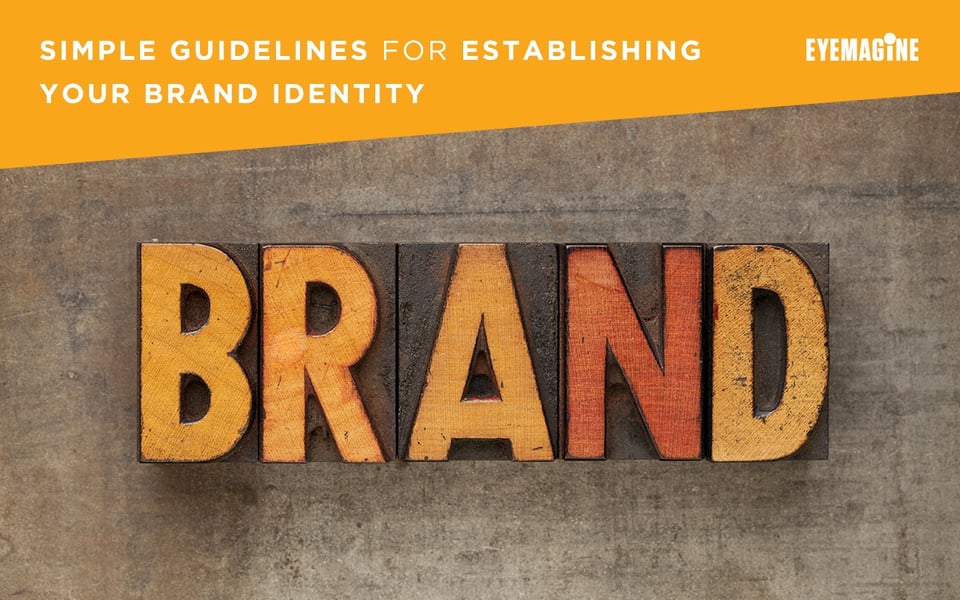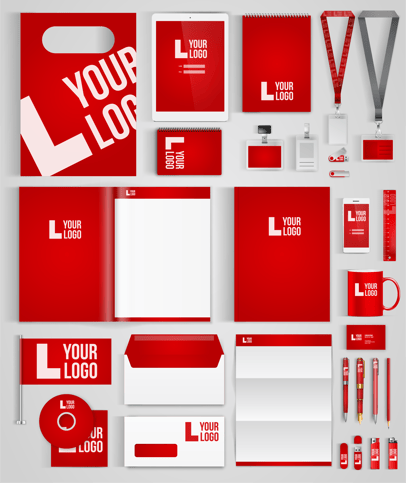 A brand identity is more than just a brand guide or logo—it’s how you separate yourself from your competition. Your brand identity touches your customers at very point, from the moment they see you as a solution to their problem to after they’ve made a purchase. It subconsciously affects every decision they make about you an your industry—including your relevance and trustworthiness, and how your brand looks, feels and speaks to them.
A brand identity is more than just a brand guide or logo—it’s how you separate yourself from your competition. Your brand identity touches your customers at very point, from the moment they see you as a solution to their problem to after they’ve made a purchase. It subconsciously affects every decision they make about you an your industry—including your relevance and trustworthiness, and how your brand looks, feels and speaks to them.
Needless to say, brand identity is important. But what is brand identity—and how do you maximize your own?
What is a Brand? What is Brand Identity?
For brands like Apple to Disney, brand identity is an experience, if not an art. For others, like Instagram and Warby Parker, brand identity is a growing facet of what makes them who they are in the minds of their customers. But what about those identities are different than their brands?
Essentially, the difference between a brand and a brand identity is whose perception we focus on—the entity who created the identity (a brand) or the people who interact with the brand (who determine the brand identity).
A brand identity is the outward expression of a brand, including its name, trademark, communications and visual appearance. The identity of the brand differs from the brand itself because it is not merely concrete fact—it is the sense of identity customers have of you, including those symbols that make you distinct from your competitors.
Your brand identity is made up of what your brand says, what your values are, how you communicate your concepts, and the emotions you want your customers to feel when interacting with your business. It is the personality of your business—a promise to your customers of who you are.
But what goes into creating a brand identity?
 Keys to a Great Brand Identity
Keys to a Great Brand Identity
While logos and color palates do play a part in creating a brand identity, there are a number of things that make great brands stand out from the competition. Those things include:
Distinctiveness: Your brand stands out from your competitors and catches the attention of your (potential) customers.
Memorability: Your brand makes a visual and emotional impact. Successful brands don’t even need their brand name with their products—their logos are enough for you know who they are and what they do.
Flexibility and Scale: Your branding can carry the weight of growth, and is strong enough to evolve with your growth and expansion.
Cohesiveness: Each piece of your brand identity compliments and build into the others.
Applicability: Designers, writers and creatives can integrate your brand design intuitively and clearly.
Developing Brand Identity
Even if you’re clear about what you want from your brand identity, the process of actually building it out requires a finessed combination of philosophy and practical, applicable design. Here’s how to get started.
Step 1: Research.
The first step is to learn everything there is to know about your business. There are questions you should be sure to ask yourself, including:
-
Who is my audience? Budding businesses often make the mistake of believing that their brand is exclusively built from what they as a company want to represent rather learning about what their customers need them to be.
-
What makes my product unique and valuable? Knowing what your product offers that your competitors don’t (as well the differences between you and your competition) is critical to creating a unique identity for your brand.
-
What is my mission? Knowing your vision and company goals is important for building your brand identity. Be sure to have a clear mission statement that describes your overall purpose—you can’t build a brand identity without it.
-
What is my personality? Even though you’re not talking about an “individual” when creating your brand, its important to know what vibe you want your brand to give off.
SEE ALSO: How to Define Your Brand Personality
In addition to asking those questions, completing a SWOT analysis is great for helping you better understand your brand. Considering these things will help you to find the character threads you want to align with your brand. SWOT stands for:
- Strengths: Positive characteristics of your business that provide an advantage over your competition.
- Weaknesses: Characteristics that prove to be a disadvantage to your business.
- Opportunities: Changes and trends in your industry that offer opportunities for your business.
- Threats: Elements in the environment or industry that may cause problems for your business.
Step 2: Design:
 Once you have established what your business represents (and who it targets) in detail, it is time to work on bringing it to life. Design itself is the art of bringing your brand to life—and, in the words of esteemed inventor Shimon Shmueli, “art optimized to meet objectives.”
Once you have established what your business represents (and who it targets) in detail, it is time to work on bringing it to life. Design itself is the art of bringing your brand to life—and, in the words of esteemed inventor Shimon Shmueli, “art optimized to meet objectives.”
Here are basic pieces of a successful brand design.
Logo
While your logo isn’t the whole of your brand identity, it is a vital element of what will make your branding successful. Your logo is the most recognizable aspect of your brand—it goes on everything from your website to your online ads, which means it needs to be as cohesive to the rest of your branding as possible.
Form
Beyond your logo, the way you present your brand in other visual forms is critical to your brand’s success. This form includes products, packaging, and presentation of your brand as a whole. This visual representation of your business requires consistency so you can build familiarity with your customers, in the hopes that the style will become synonymous with your brand.
Color & Type
Color palates and distinctive typography are extremely effective ways to maximize and enhance the effectiveness of your brand identity. Established color match-ups and type can help you to create unique design variations for your business while remaining faithful to your brand identity. This is effective not only for keeping things fresh, but remaining consistent in the minds of your consumers.
Templates
Whether this means emails, letterheads, business cards or flyers, creating templates for pieces of repeated content (even things as simple as email footers) will give your business a more unified and professional sense of itself.
SEE ALSO: 5 Marketing Materials Necessary in the Digital Age
Step 3: Implement
Once you’ve taken the time to create all these facets of your brand (and integrate them into your internal processes), its time to take your brand outward and present it to the world.
There are a number of strategies that work for bringing your brand identity to the forefront of people’s minds.
Keep your language consistent.
Be sure to use language that matches the personality you want to portray with your brand. Whether that is high-end (which warrants professional language) or laid-back (more conversational language), be sure to write the same way across all your content and social media channels. Make sure you maintain a tone that matches your brand.
Connect with Stories
A strong brand identity is always tied to the stories the brands tell. Great brands establish emotional connections with their consumers, telling stories that connect them to emotionally to your purpose, people, or cause.
Advertise Yourself
Designing ads is a huge part of introducing your brand to the world. It’s a way to be seen initially (and repeatedly) by your target audiences.
Use Social Media
Creating connections with your consumers through social media is a great way to open yourself up to building relationships. Conversing with your consumers directly and giving them a reason to think well of your brand is important to building a good reputation for your brand over time.
SEE ALSO: 4 Top Branding Guidelines to Improve Your Marketing Strategy
Keeping your Brand Identity Strong
With effort and planning, strong visual language, personality and presence will develop your brand identity into one people recognize and identify with—which is why branding is so important in the first place.
It is also important to make sure you analyze and refine your brand as necessary—while the core of your brand may stay the same, being aware of your company and its consumers is critical to growing your brand into a strong and healthy presence in the long run.
Always remember: building a great brand identity takes time. Still, staying the course with these strategies is a huge part of what will help make your brand successful.


